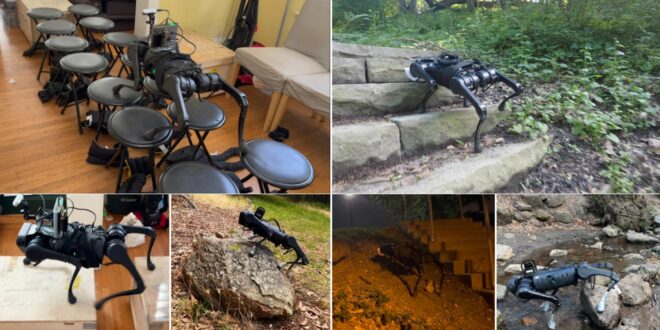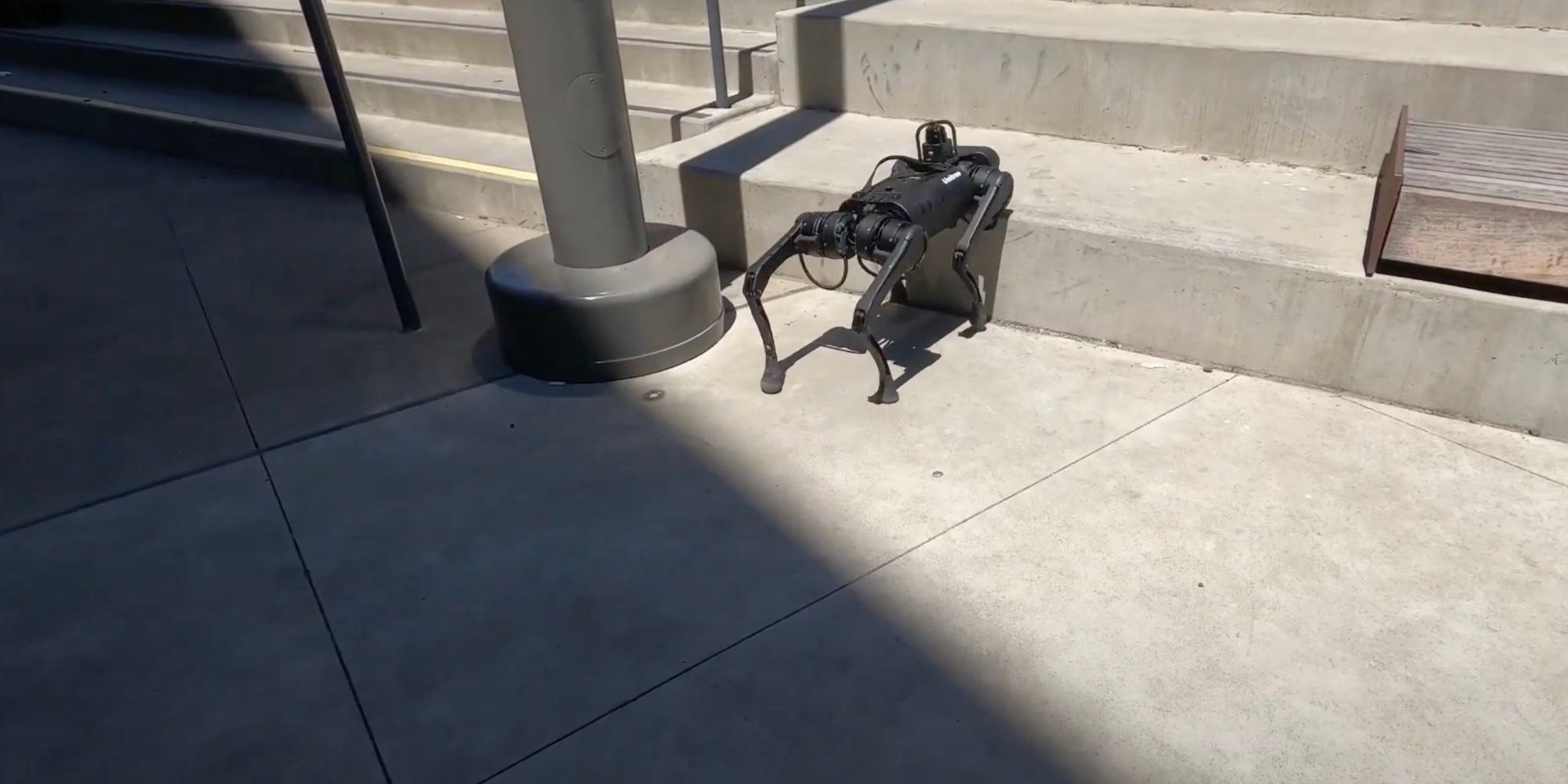Many people will remember Boston Dynamics Robot Its name is Spot, but a new four-legged robotic dog developed by researchers at Carnegie Mellon University and UC Berkeley is now in the spotlight. Robotics and technology have come a long way over the past few years, and researchers are constantly working on creating better and more advanced AI-powered robots.
Unlike most animals, which tend to rely on their vision to navigate around their surroundings, robots can use a combination of sensors and sensors cameras to map their environment. The Boston Dynamics bot, for example, uses an indoor map for navigation. However, this can cause some limitations, such as the inability of robots to navigate new surroundings and obstacles. The researchers want to change that with a new four-legged robot dog.
The team at Carnegie Mellon (trans MIT Technology Review) You have created A robotic dog that relies exclusively on cameras to direct its movements. Before being released into a new environment, the robot is first trained to navigate different environments in a simulator, much like a robot How do babies learn to walk? using trial and error. Since the robot only uses vision to navigate the terrain, it must remember the location of objects behind it as it moves. A short video clip shows the robot climbing atop barstools, as it needs to remember the location of the stools it just climbed on to properly position its hind feet.
The robotic dog has its limits
The researchers said the robot also showed “Emerging climbing behavior,” which allowed it to solve problems even after it initially got stuck. Because the robot relies on vision, it can move across terrain it hasn’t been specifically trained on in a general way, similar to how humans use it. Move across new terrains never seen before. The robot is also very flexible, as it can walk across slippery surfaces and survive falls.
Of course, nothing is perfect, and there are some limitations and failures to this bot. First, since the robot uses human-like vision to move, this comes with bugs that are human-prone as well. For example, when moving through multiple objects with gaps between them, the robot is unable to see the objects behind it. If there is an error in Retrieving the previous positions of things That the hind legs need to be stepped on, the robot will miss the step and fall. Another problem occurs with a very large step and when the extent of the drop cannot be seen. When this happens, the robot simply falls off the step. But with further revision and corrections, these issues could be resolved in the future.
Interestingly, when the robot was placed in a completely unstructured area for which it had not been trained, such as rocky or slippery slopes, it was still able to adapt and move forward, despite having accidents along the way. The robot’s camera also includes an infrared light sensor that allows it to navigate in the dark with little ambient light. Videos show them crossing roads and climbing stairs at night, Which is impressive. While it still has a long way to go, the Carnegie Mellon team has taken a huge step toward creating a Robot He can survive in the real world.
Originally posted 2022-11-25 10:12:07.

